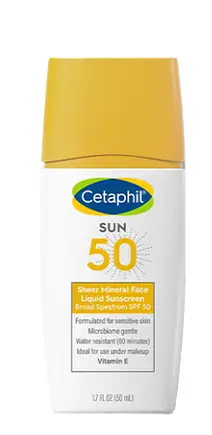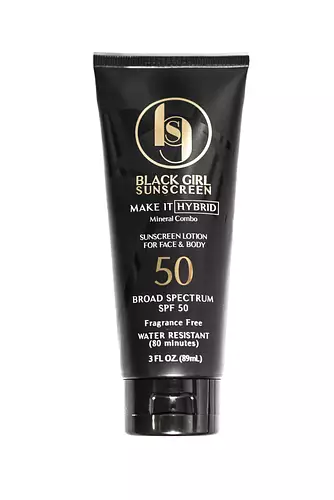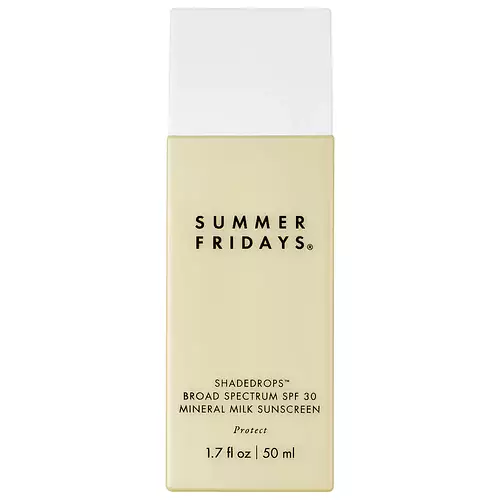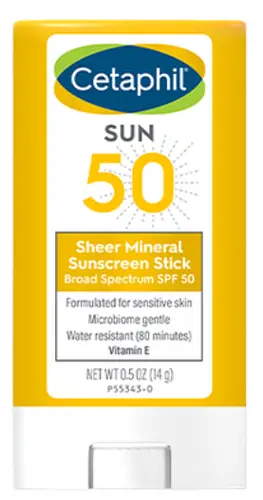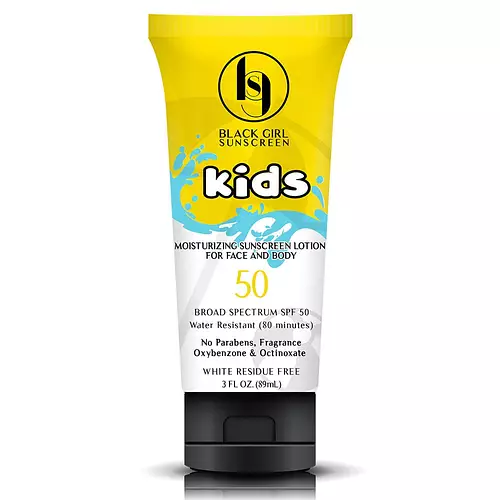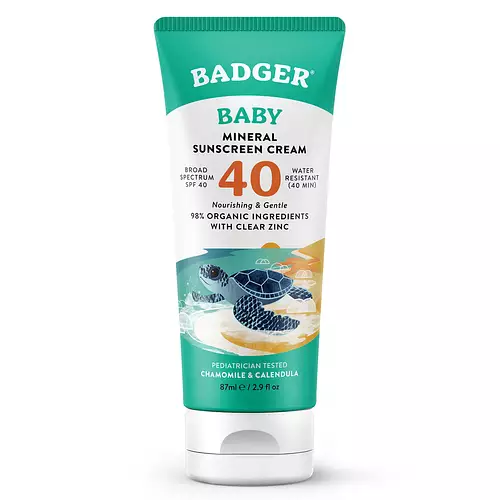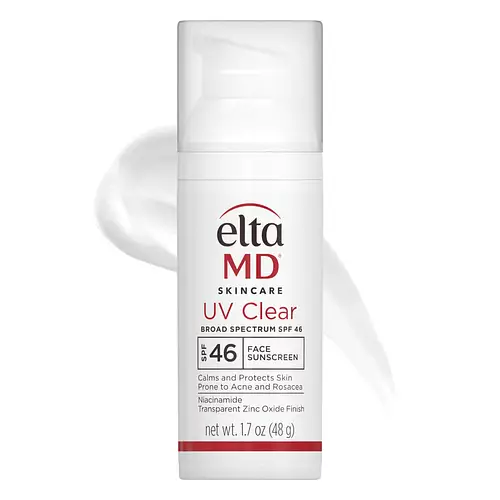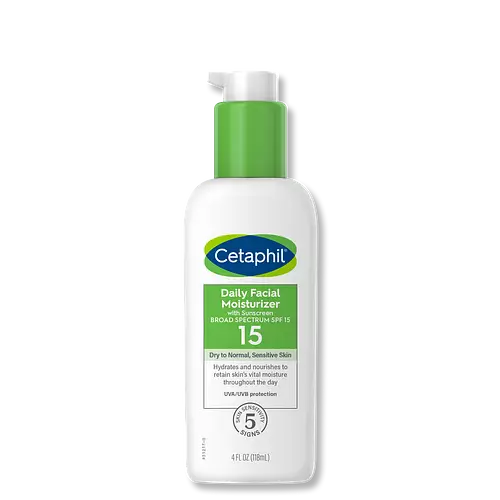Cetaphil Sheer Mineral Face Liquid Sunscreen Broad Spectrum SPF 50 Versus Black Girl Sunscreen Make It Hybrid™ SPF 50 Sunscreen
Updated on July 12, 2024
Overview
What they are
These products are both sunscreens. They have a total of 4 ingredients in common
Cool Features
They both contain SPF and Vitamin E
Suited For
They're both likely to be good for fighting acne, brightening skin and sensitive skin
Free From
They both do not contain any harsh alcohols, fragrances, parabens or sulfates
We independently verify ingredients, and our claims are backed by peer-reviewed research. Spot a product that needs an update? Let us know.
Ingredient Info
Cetaphil Sheer Mineral Face Liquid Sunscreen Broad Spectrum SPF 50 26 ingredients
Black Girl Sunscreen Make It Hybrid™ SPF 50 Sunscreen 21 ingredients
At a glance
Click on any of the items below to learn more
Cetaphil Sheer Mineral Face Liquid Sunscreen Broad Spectrum SPF 50 26 ingredients
Black Girl Sunscreen Make It Hybrid™ SPF 50 Sunscreen 21 ingredients
Notable Ingredients
This product contains 1 ingredient that may have this attribute:
This product contains 1 ingredient that may have this attribute:
This product contains 1 ingredient that may have this attribute:
Benefits
This product contains 1 ingredient that may have this attribute:
This product contains 2 ingredients that may have this attribute:
This product contains 1 ingredient that may have this attribute:
This product contains 1 ingredient that may have this attribute:
This product contains 1 ingredient that may have this attribute:
This product contains 2 ingredients that may have this attribute:
This product contains 2 ingredients that may have this attribute:
Concerns
This product contains 1 ingredient that may have this attribute:
This product contains 1 ingredient that may have this attribute:
This product contains 1 ingredient that may have this attribute:
Notable Ingredients
This product contains 3 ingredients that may have this attribute:
This product contains 1 ingredient that may have this attribute:
This product contains 1 ingredient that may have this attribute:
Benefits
This product contains 5 ingredients that may have this attribute:
This product contains 1 ingredient that may have this attribute:
This product contains 1 ingredient that may have this attribute:
This product contains 1 ingredient that may have this attribute:
This product contains 2 ingredients that may have this attribute:
Concerns
This product contains 2 ingredients that may have this attribute:
This product contains 1 ingredient that may have this attribute:
This product contains 1 ingredient that may have this attribute:
Ingredients Side-by-side
Ingredients Explained
These ingredients are found in both products.
Ingredients higher up in an ingredient list are typically present in a larger amount.
Zinc Oxide is a mineral broad-spectrum UV filter; it is the broadest UVA and UVB reflector approved by the FDA. While it is most commonly man-made for cosmetics, it can naturally occur in zincite, a rare mineral.
Today, traditional and nano-sized zinc oxide can be found in beauty products. Nano-sized zinc oxide can enhance a product's UV protection. While it is not believed to have a negative effect on skin, nano-zinc oxide can be harmful to coral reefs.
More about harmful reef ingredients here.
Zinc Oxide also has antibacterial and calming properties. It is not water soluble.
Zinc has been used throughout history as an ingredient in paint and medicine. An Indian text from 500BC is believed to list zinc oxide as a salve for open wound. The Ancient Greek physician Dioscorides has also mentioned the use of zinc as an ointment in 1AD.
Learn more about Zinc OxideSodium Hydroxide is also known as lye or caustic soda. It is used to adjust the pH of products; many ingredients require a specific pH to be effective.
In small amounts, sodium hydroxide is considered safe to use. However, large amounts may cause chemical burns due to its high alkaline.
Your skin has a natural pH and acid mantle. This acid mantle helps prevent harmful bacteria from breaking through. The acid mantle also helps keep your skin hydrated.
"Alkaline" refers to a high pH level. A low pH level would be considered acidic.
Learn more about Sodium HydroxideTetrasodium Glutamate Diacetate is a chelating agent. Chelating agents help prevent metal ions from binding to other ingredients. This helps prevent unwanted effects and reactions from a product. These metal ions may come from water and are found in miniscule amounts.
Tetrasodium Glutamate Diacetate can also help other preservatives be more effective.
Water. It's the most common cosmetic ingredient of all. You'll usually see it at the top of ingredient lists, meaning that it makes up the largest part of the product.
So why is it so popular? Water most often acts as a solvent - this means that it helps dissolve other ingredients into the formulation.
You'll also recognize water as that liquid we all need to stay alive. If you see this, drink a glass of water. Stay hydrated!
Learn more about WaterIngredient Ratings
Here's what our community thinks of the ingredients in these products.
When to use
Cetaphil Sheer Mineral Face Liquid Sunscreen Broad Spectrum SPF 50 26 ingredients
Black Girl Sunscreen Make It Hybrid™ SPF 50 Sunscreen 21 ingredients


Reviews
Here's what our community thinks
Cetaphil Sheer Mineral Face Liquid Sunscreen Broad Spectrum SPF 50 26 ingredients
UnidentifiedFlyingOkra
just ok
Slightly more drying, irritating, clogging, and expensive(lol) than my current US drugstore mineral favorite - Banana Boat Baby/Sensitive....
just ok
Slightly more drying, irritating, clogging, and expensive(lol) than my current US drugstore mineral favorite - Banana Boat Baby/Sensitive. Despite a lovely, runny texture still leaves almost as much of a white cast on my white/fair-toned skin than BBB which is classically thick & goopy stuff - both are likely incompatible with darker skin tones unfortunately. FA safe and overall probably better option for fungal acne sufferers than most other US drugstore sunscreens, but at less than half the price, a bigger tube, and a formula that works slightly better for my skin, I'll stick with BBB going forward 'til I have more time to research chemical filters. Good luck in your search!
